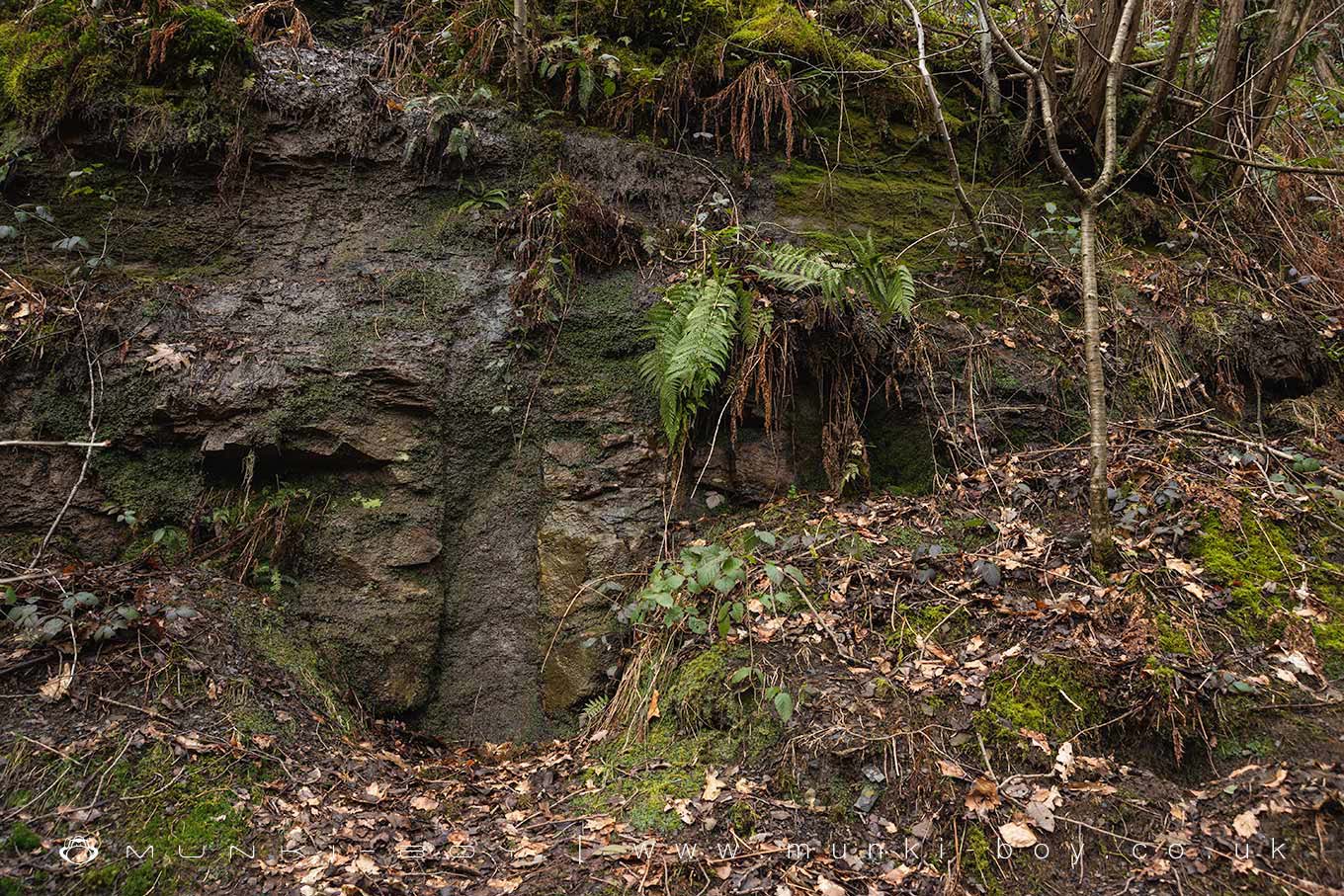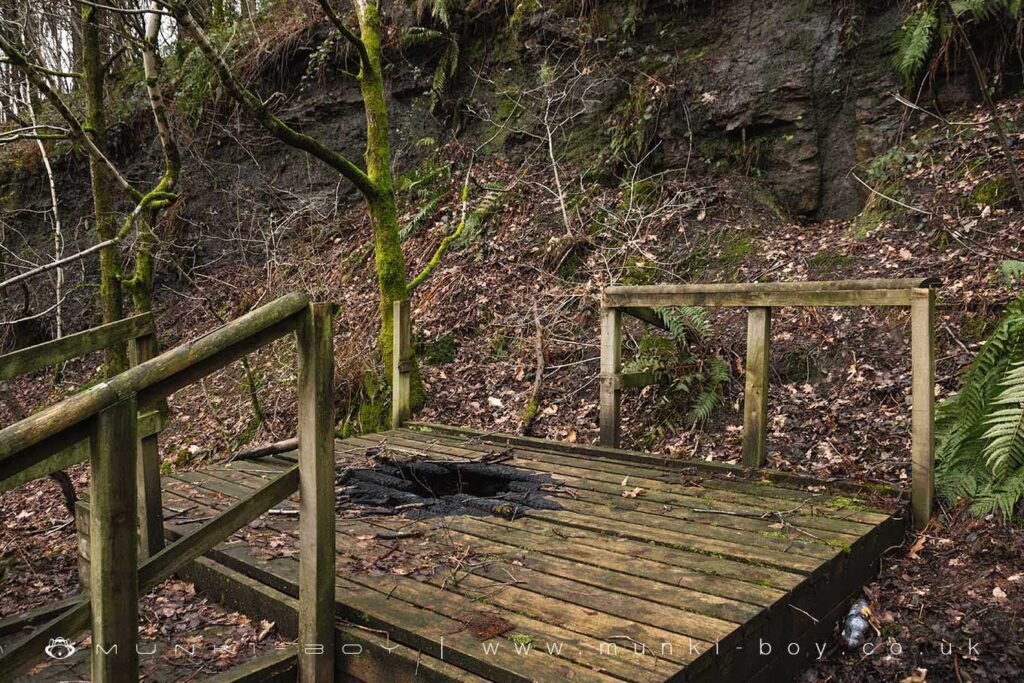
Jumbles Fossil Tree
There is a fantastic 3 metre tall fossil indentation of a carboniferous plant – probably Calamites – that can be found behind the old Jumbles Quarry together with it’s abandoned viewing platform.
This fossil plant would have lived in the Carboniferous period around 300 million years ago in a tropical swamp and would have been like a giant version of the horsetail plants we can still find today – but much larger like a tree. Calamites probably grew in “forests” – before there were any trees as we know them today – and is one of the plants that formed coal in the West Pennine Moors area, Luckily for us this particular plant was preserved in its upright state unlike most of the others that were crushed on the forest floor. At the time, the land where the plant grew would have been somewhere near the equator.
The fossil is situated behind some very boggy ground so take care when visiting, the overgrown gate can be found at the end of the modern concrete bridge beside the old, flooded quarry and the fossil found a little further on.

Local History
Historic monuments near Jumbles Fossil Tree
- Coking ovens and associated coal workings on Aushaw Moss 450m south west of Lower House – 4.61 km away
- Stone circle, ring cairn and two round cairns on Cheetham Close – 2.18 km away
- Roman road at Bottom o’ th’ Knotts Brow – 1.02 km away
- Higher Mill, Helmshore – 7.81 km away
- Steam tramway reversing triangle – 6.76 km away
- Affetside Cross at Affetside 75m north west of the Pack Horse Inn – 2.25 km away
- Promontory fort called Castlesteads on the east bank of the Irwell 550m SSE of Banks Farm – 6.40 km away
- Radcliffe Tower and site of hall 100m south west of the parish church in Radcliffe – 9.49 km away
